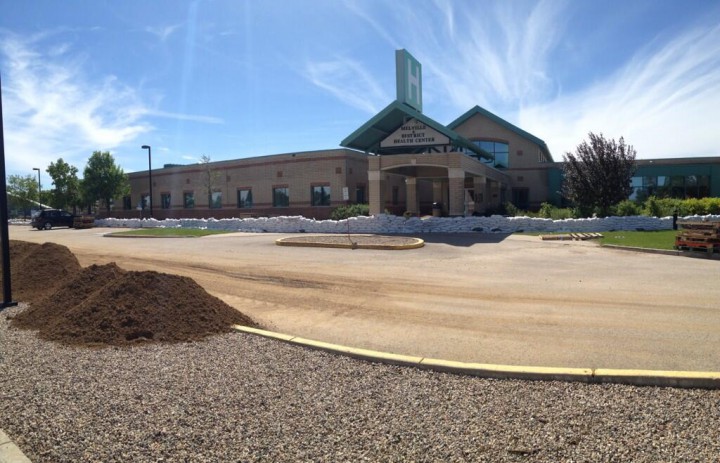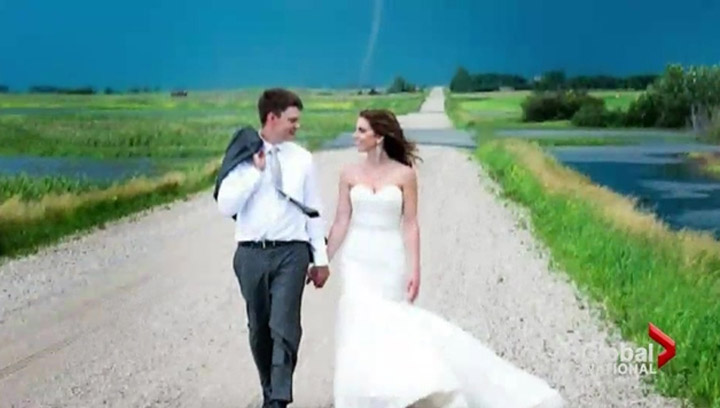SASKATOON – We asked you what our top newsmakers of 2014 were and the resounding response above everything else, with nearly half the votes in our online poll, was extreme weather.

2014 came blasting into Saskatoon on Jan. 15, with record breaking wind gusts toppling cell towers, shattering windows and sending buildings flying. It was the windiest January day Saskatoon has ever recorded history, dating back over 100 years to 1892, with the strongest gust of 115 km/h shattering the previous wind gust record of 111 km/h from 1986.
The City of Saskatoon was placed under a level 1 emergency alert, public schools issued a shelter in place to keep children inside and power was knocked out to many parts of the city for hours causing many businesses to close for the day.
MORE: Wind storm batters Saskatchewan leaving a wake of damage
Then came the bitter cold that gripped Saskatoon in a total of 56 days with wind chill values below minus 30. That’s nearly double the normal number of days with extreme wind chill values dropping below that threshold.
The deep freeze put major strains on the city’s infrastructure, leaving many residents without water as the city scrambled to fix broken water mains.
On Feb. 28, Acting Public Works Director Trent Schmidt said, “It’s probably been one of the worst three-week periods in the last 10 years or so for us when you look at total break counts.”
In June, a year’s worth of rain falling over a two-day period crippled parts of southeastern Saskatchewan, forcing hundreds from their homes, closing dozens of highways and swamping hundreds of thousands of hectares of farmland in over 200 mm of rain.

Get daily National news
By early July, 95 Saskatchewan communities had declared states of emergency. Flood waters rose so high that over 150 residents at St. Peter’s hospital and St. Paul Care Home in Melville had to be evacuated to a local arena.
It was an evacuation Melville Mayor Walter Streelasky felt took the flooding situation to a whole new level. “You get water in the basement and that’s one thing, but when you start looking at health and have people that are very dependent on care, then it becomes a very serious situation and that’s when we got very concerned.”
Watch below: Melville flooding
Grandview Beach was one of the hardest hit areas where cottage owners watched helplessly as generations of memories were destroyed on a slumping slope. Heartbroken and devastated, the community pulled together to support one another through the difficult time.
MORE: Grandview Beach landslide continues to cause destruction
Just as flooding was reaching its peak, so was severe weather season. July 5 saw six tornadoes touchdown in Saskatchewan, including one that ripped through a cemetery in Kenaston and another that completely destroyed an Outlook area farm.
Ray Derdall recounts the moments as the tornado struck his farm and he almost lost his life: “I got pinned when the wall fell down on top of me … just about everything in the yard is toast … it even sucked the potatoes out of the ground!”
MORE: Environment Canada confirms EF2 tornado south of Saskatoon
Also caught off guard were a newlywed couple who were photo bombed by a twister in a post that immediately went viral online.
The lack of advanced warning of possible tornadoes that day along with other recent instances raised questions about Environment Canada’s handling of severe weather in Saskatchewan. A Global News exclusive uncovered that there are indeed discrepancies with how the agency covers weather events.
Environment Canada’s western region manager of client services, Dennis Dudley, answered this question for Global News, stating, “Some regions manage these kind of things different than others – for example, Ontario – they have standard procedures where they essentially provide a summary of events almost on a daily basis.”
The investigation also found that location isn’t the only factor affecting how much information is provided to the public.
Dudley said, “the frequency of which the prairies might put out an event might depend on who’s on shift, how much information they have, how much time they have, whether it’s a weekend or not, who’s around, and the experience of the people.”
Micheal Lam, a Saskatchewan resident who has been caught off guard recently believes it should be otherwise. “It shouldn’t depend on where something happens to determine how much coverage it gets.”
MORE: Environment Canada admits to differing standards of weather coverage
The remainder of the summer was plagued with severe storms leveling crops, flooding streets and knocking over trees.
The year ended on a quieter note but what 2014 will be remembered for is a year of experiencing the force of nature. A year of cleanup. A year of millions of dollars of damage.
But amid the lost livelihoods of so many, what may have been highlighted most was that there is nothing stopping the people of Saskatchewan from forging ahead together even through the toughest of times.









Comments